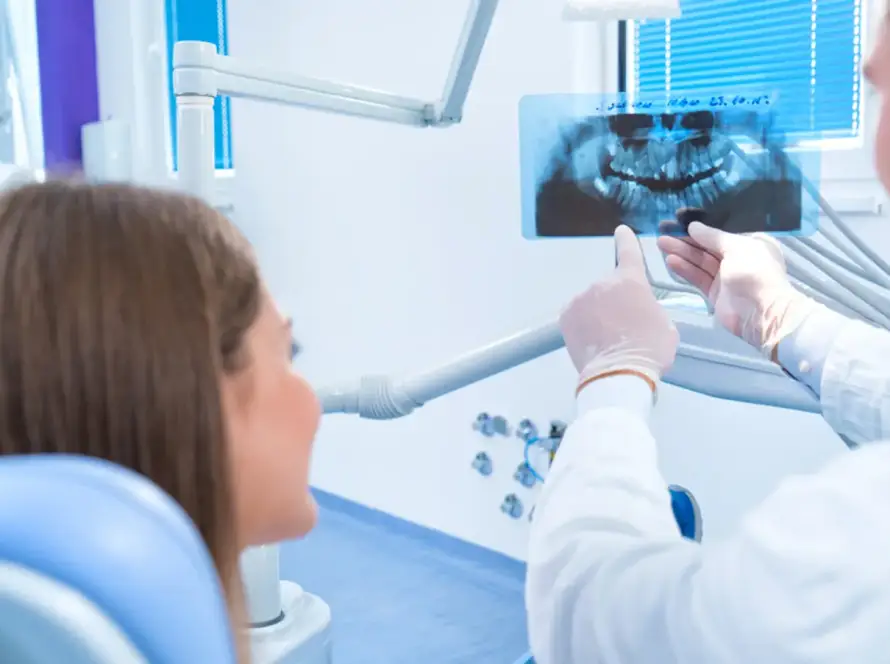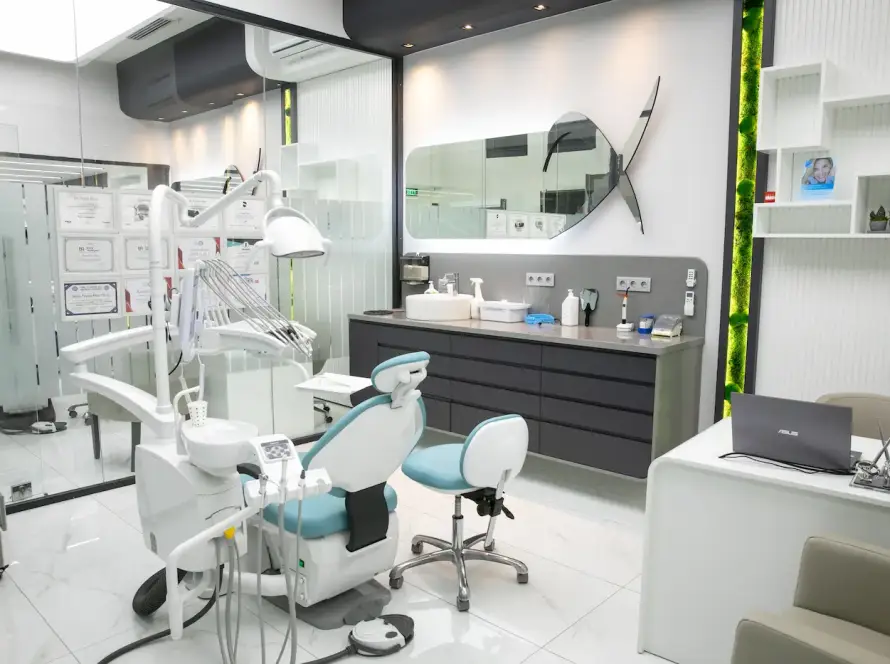Introduction to Braces and Invisalign
Braces and Invisalign are both popular orthodontic treatments used to correct misalignment and achieve straighter teeth. Braces consist of brackets attached to the teeth, connected by wires that gradually shift the teeth into the desired position. Invisalign, on the other hand, utilizes a series of clear, removable aligners that are custom-made for each patient.
Both braces and Invisalign have their advantages and considerations. Braces are effective for more severe cases of misalignment and can address complex issues such as overcrowding or bite problems. In contrast, Invisalign is often preferred for individuals seeking a more discreet and comfortable option, with the ability to remove the aligners for eating, brushing, and flossing.
While braces may require more frequent adjustments and visits to the orthodontist, Invisalign typically involves fewer check-ups. It is essential to consult with an orthodontist to determine which treatment is better suited to address individual needs and orthodontic goals.
In the following sections, we will further explore the pros and cons of braces and Invisalign, providing an in-depth comparison to help you make an informed decision.
Pros and Cons of Braces
Braces, commonly made of metal brackets and wires, have been the traditional method for orthodontic treatment for many years. While they are effective in correcting a wide range of dental issues, they also have their pros and cons.

Pros of Braces
- Effective for complex dental issues: Braces are highly effective in treating complex dental problems, such as overcrowding, severe misalignment, and bite issues. They can provide precise control over tooth movement, ensuring comprehensive and long-lasting results.
- Predictable outcomes: Since braces use a steady force to gradually shift teeth into their desired positions, orthodontists can accurately predict the outcome of treatment. This predictability ensures that patients can have a clear understanding of the end result.
- Less compliance-dependent: Unlike clear aligners, braces are fixed onto the teeth, eliminating the need for patients to remember to wear them or keep track of their aligner trays. This can be beneficial for individuals who may struggle with compliance or tend to misplace their aligners.
- Lower costs: In general, braces tend to be more affordable compared to alternative orthodontic treatments. This makes them a more accessible option for individuals who may have budget constraints.
Cons of Braces
- Aesthetics: One of the most significant drawbacks of braces is their noticeable appearance. The metal brackets and wires can be highly visible, which can impact the individual’s confidence, especially for adults or individuals in professional settings.
- Oral hygiene challenges: Braces can make brushing and flossing more challenging. The brackets and wires create spaces for food particles to get trapped, increasing the risk of plaque buildup and dental issues, such as cavities and gum disease. Maintaining diligent oral hygiene practices becomes crucial during braces treatment.
- Discomfort and soreness: As the braces exert pressure on the teeth to move them, individuals may experience discomfort and soreness initially. Adjustments may also cause temporary discomfort, adding to the overall discomfort during the treatment period.
- Restricted diet: While wearing braces, individuals need to avoid certain foods that can damage the brackets or wires. Sticky, hard, or chewy foods, such as gum, popcorn, and hard candies, should be avoided to prevent any mishaps or damage to the braces.
It is important to weigh these pros and cons when considering orthodontic treatment with braces. While braces are a proven and reliable option, the individual’s personal preferences, lifestyle, and dental needs should also be taken into account before making a decision.
Pros and Cons of Invisalign
Invisalign aligners have gained popularity due to their advantages over traditional braces. However, they also have their drawbacks. Here are the pros and cons of Invisalign:
Pros:
- Appearance: Invisalign aligners are virtually invisible, allowing patients to maintain a more natural look during their treatment. They are made from clear plastic and blend in with the teeth, making them less noticeable than traditional metal braces.
- Removability: Invisalign aligners can be easily removed for eating, brushing, and flossing. This allows for better oral hygiene since there are no wires or brackets to clean around. It also means that there are fewer dietary restrictions compared to braces.
- Comfort: Invisalign aligners are smooth and do not have any wires or brackets that can irritate the mouth. They are custom-made to fit the patient’s teeth, providing a more comfortable experience during the treatment process.
- Convenience: Invisalign requires fewer visits to the orthodontist compared to braces. The aligners are typically replaced every one to two weeks, and adjustments are made at these appointments. This can save time for individuals with busy schedules.
Cons:
- Compliance: Unlike braces, which are fixed to the teeth, Invisalign aligners are removable. This means that they rely on the patient’s compliance to wear them for the recommended 20-22 hours per day. Failure to wear them consistently can result in treatment delays or suboptimal results.
- Attachments: Some cases may require the use of small tooth-colored attachments on the teeth to aid in the alignment process. These attachments can affect the appearance of the aligners, making them more noticeable. However, not all cases require attachments.
- Cost: Invisalign can be more costly than traditional braces, although prices can vary depending on the complexity of the case and the location. Insurance coverage may also differ for Invisalign compared to braces, leading to potential additional out-of-pocket expenses.
- Limited scope: Invisalign is not suitable for all orthodontic cases. It may not be as effective in treating severe bite issues or significantly misaligned teeth. Braces may be a better option for complex cases that require more precise control over tooth movement.
Understanding the pros and cons of Invisalign allows individuals considering orthodontic treatment to make an informed decision. It’s essential to consult with an orthodontist to determine the most suitable treatment option based on their specific needs and expectations.
Effectiveness in Treating Different Dental Issues
When it comes to treating different dental issues, both braces and Invisalign have proven to be effective options.
Braces
- Braces are the traditional and widely-used method for correcting various dental problems.
- They are highly effective in treating severe malocclusions, such as overcrowding, crooked teeth, and gaps between teeth.
- Braces apply continuous pressure to gradually move teeth into their desired positions.
- They can correct complex dental issues that may be difficult to resolve with other methods.
- Braces often result in predictable and long-lasting outcomes, ensuring a beautiful smile and improved oral health.
Invisalign
- Invisalign, on the other hand, provides an alternative treatment option for mild to moderate dental issues.
- It uses a series of clear, removable aligners to gently shift teeth into place.
- Invisalign aligners are custom-made and offer a more discreet and comfortable treatment experience than traditional braces.
- They are particularly effective in treating mild crowding, spacing, and minor bite problems.
- Invisalign allows for easy maintenance of oral hygiene as the aligners can be removed for eating and brushing.
Both braces and Invisalign have their advantages and effectiveness in treating different dental issues. The choice ultimately depends on the severity of the dental problem and the patient’s preferences. Consulting with an orthodontist will help determine which treatment option is best suited to address specific dental concerns.
Duration of Treatment
The duration of treatment is an important factor to consider when comparing braces and Invisalign. Braces typically require a longer treatment duration compared to Invisalign. On average, orthodontic treatment with braces can last anywhere from 18 months to 3 years, depending on the complexity of the case.
In contrast, Invisalign treatment tends to be shorter, with an average duration of 9 to 18 months. This is because Invisalign uses a series of custom-made aligners that gradually shift the teeth into their desired position. These aligners are changed every two weeks, progressing the treatment in a controlled manner.
It’s worth mentioning that the actual length of treatment may vary depending on individual factors, such as the severity of the misalignment and the compliance of the patient in wearing the aligners. In some cases, both braces and Invisalign may take longer if there are complexities that need to be addressed.
Patients who are concerned about the duration of treatment should consult with their orthodontist to determine which option is better suited to their specific needs and goals.
Maintenance and Care
Taking proper care of your orthodontic treatment is essential for achieving the best results. Both braces and Invisalign require regular maintenance and care to keep your teeth and gums healthy.
Braces:
- Brushing and flossing: With braces, brushing and flossing become more challenging due to the brackets and wires. It is important to brush your teeth at least twice a day using a soft-bristle toothbrush and a fluoride toothpaste. Flossing should be done carefully, using special orthodontic floss or floss threaders to maneuver around the wires.
- Avoiding certain foods: Patients with braces must avoid chewy, sticky, and hard foods that can damage the brackets and wires. This includes popcorn, gum, caramel, and hard candies. It is important to follow your orthodontist’s dietary recommendations to prevent any mishaps or delays in treatment.
- Regular dental check-ups: It is crucial to maintain regular dental check-ups and cleanings while undergoing orthodontic treatment with braces. Your dentist can monitor your oral health, clean hard-to-reach areas, and ensure that your teeth and gums are in good condition.
Invisalign:
- Oral hygiene: With Invisalign, maintaining good oral hygiene is relatively easier compared to braces. You can remove the aligners to brush and floss your teeth as you normally would. It is recommended to brush your teeth after each meal before placing the aligners back on.
- Cleaning the aligners: Invisalign aligners should be cleaned on a daily basis to prevent the buildup of bacteria and plaque. You can use a soft-bristle toothbrush and mild antibacterial soap or the Invisalign cleaning system recommended by your orthodontist.
- Avoiding staining substances: Certain food and drinks such as coffee, tea, red wine, and tomato sauce can cause the aligners to stain. It is advisable to remove the aligners before consuming any staining substances to avoid discoloration.
- Follow-up appointments: Throughout your Invisalign treatment, it is important to attend regular follow-up appointments with your orthodontist. These appointments allow your progress to be monitored, and any necessary adjustments can be made to ensure optimal results.
By following the maintenance and care instructions provided by your orthodontist, both braces and Invisalign can lead to successful orthodontic outcomes.
Comfort and Convenience
Both braces and Invisalign offer different levels of comfort and convenience for patients.
Braces:
- Braces can cause some discomfort initially as the mouth adjusts to the appliance and the pressure put on the teeth.
- The brackets and wires can irritate the mouth, causing soreness or ulcers.
- The brackets can potentially scrape against the inside of the cheeks and lips, leading to discomfort.
- It may take some time for patients to adjust to eating certain foods and brushing their teeth with braces.
- Regular adjustments and maintenance visits are required, which can be inconvenient for some patients.
Invisalign:
- Invisalign aligners are made of smooth, clear plastic, making them generally more comfortable than braces.
- The aligners are custom-made to fit the patient’s teeth, reducing the risk of irritation and ulcers.
- Invisalign aligners are removable, allowing for easy cleaning of both the aligners and the teeth.
- Patients can eat and drink as normal since the aligners are taken out during meals.
- There are no wires or brackets to adjust, eliminating the need for frequent visits to the orthodontist.
In terms of comfort and convenience, Invisalign may have the edge over traditional braces. However, it is important to consult with an orthodontist to determine the best treatment option for individual needs and preferences.
Cost Comparison
When considering orthodontic treatment options, cost is an important factor to take into account. Both braces and Invisalign have different cost considerations.
- Braces typically have a lower upfront cost compared to Invisalign. Traditional metal braces can range in price from $3,000 to $7,000, depending on the complexity of the case and the location of the orthodontist.
- Invisalign, on the other hand, tends to be more expensive. The average cost for Invisalign treatment ranges from $3,500 to $8,000. Invisalign aligners are custom-made and require additional costs, which contribute to the higher price tag.
It’s important to note that the actual cost of braces or Invisalign treatment will vary depending on individual cases, treatment duration, and additional procedures required. Insurance coverage may also play a role in reducing the overall cost of treatment.
Factors to Consider
When comparing the cost of braces and Invisalign, there are a few factors to consider:
- Treatment duration: The average treatment time for braces is usually longer compared to Invisalign. Lengthy treatment may result in increased costs due to additional visits and adjustments needed.
- Maintenance and care: With braces, patients may need to pay for occasional repairs or replacements of brackets and wires. Invisalign aligners, on the other hand, might need to be replaced more frequently, adding to the overall cost.
- Insurance coverage: Some dental insurance plans cover a portion of orthodontic treatment. It’s important to check with insurance providers to determine what is covered and what is not.
- Personal preference: Ultimately, the decision between braces and Invisalign may come down to personal preference and lifestyle factors. Some people may be willing to pay more for the convenience and aesthetic appeal of Invisalign, while others may prefer the affordability and effectiveness of traditional braces.
Before making a decision, it is advisable to consult with an orthodontist who can provide an accurate cost estimate based on individual needs. They will be able to discuss any financing options available to make orthodontic treatment more affordable for their patients.
Impact on Daily Activities
Both braces and Invisalign can have an impact on daily activities, but the extent of this impact may vary.
Braces
Braces, with their metal brackets and wires, require some adjustments to daily routines. They can cause discomfort or soreness, especially when eating certain foods. Hard or sticky foods might need to be avoided to prevent damage to the braces. Oral hygiene routines may also need to be modified, with extra care required to clean around brackets and wires. Additionally, braces can affect speech initially, causing a slight lisp until the tongue adjusts to the presence of the braces.
Invisalign
On the other hand, Invisalign aligners offer a more convenient option. They are removable, allowing for easier eating, brushing, and flossing. There are no food restrictions since aligners can be taken out during meals. Speech is generally not significantly affected with Invisalign aligners, as there are no brackets or wires to interfere with tongue movement.
Overall, Invisalign aligners tend to have a lesser impact on daily activities compared to traditional braces. However, it is important to note that aligners should be worn for a recommended number of hours per day to achieve desired results.
Long-Term Results and Retention
Both braces and Invisalign can produce long-term results and help to maintain them with proper retention methods.
Braces
Braces are known for providing effective long-term results. The brackets and wires exert consistent pressure on the teeth, gradually shifting them into the desired position. This allows for precise control over tooth movement, making braces particularly suitable for complex cases. Once the treatment is complete, braces typically require a period of retention to ensure that the teeth remain in their new positions. Retention can involve the use of a retainer, which may be removable or fixed, and regular follow-up visits with the orthodontist.
Invisalign
Invisalign aligners also offer long-term results, provided the patient complies with the treatment plan. These clear aligners are custom-made to fit snugly over the teeth and exert gentle pressure to shift them into alignment. Invisalign is often preferred for its aesthetic appeal and the convenience it offers during treatment. By wearing the aligners for the recommended amount of time each day and following the instructions of the orthodontist, patients can achieve lasting results. Once the active treatment is complete, retention methods, such as wearing a retainer, will be prescribed to maintain the corrected alignment.
Factors to consider
When comparing long-term results and retention between braces and Invisalign, several factors should be considered:
- Complexity of the case: Braces may be better suited for complex cases that require precise tooth movement.
- Compliance: Invisalign relies on the patient’s commitment to wearing the aligners consistently, which can influence the effectiveness of long-term results.
- Maintenance: Both braces and Invisalign require proper maintenance to ensure retention. Patients should follow the orthodontist’s instructions regarding retainer wear, oral hygiene, and regular check-ups.
In the end, the choice between braces and Invisalign should be based on an individual’s specific needs and preferences, as well as the orthodontist’s recommendation for achieving the best long-term results and retention.















